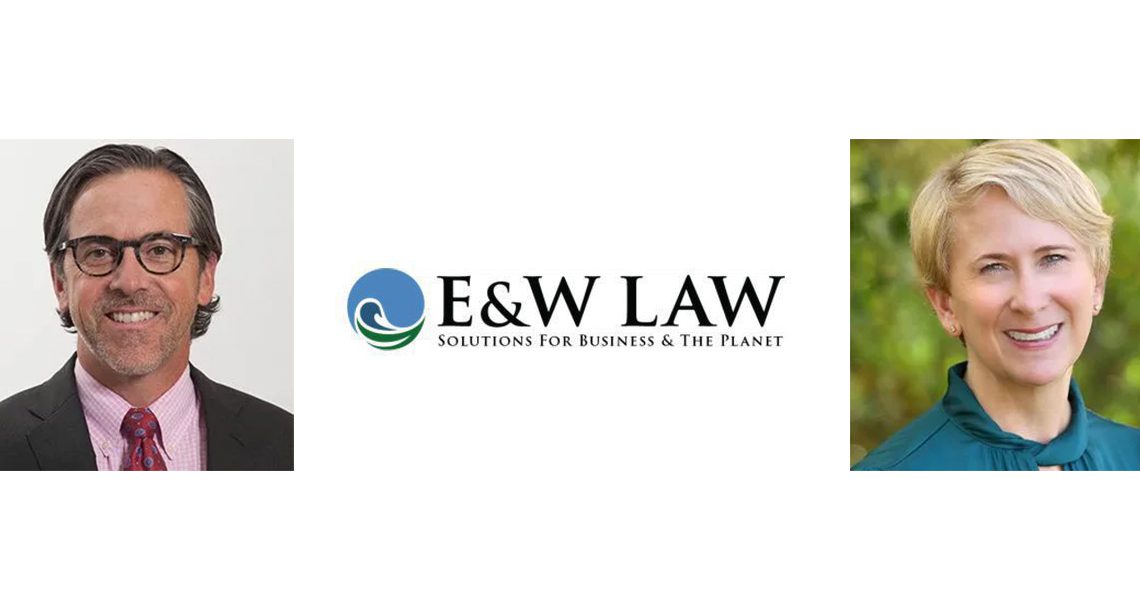By Edward B. Witte and Heather Davis, Earth & Water Law
Overview
On September 26, 2025, the Wisconsin Department of Natural Resources (WDNR) issued Responsible Party letters (links here and here) to two paper companies in connection with widespread PFAS contamination in the Town of Stella, Oneida County. The WDNR’s action underscores the agency’s reaffirmed authority to regulate PFAS as hazardous substances under Wisconsin’s Spills Law, as recently validated by the Wisconsin Supreme Court in Wisconsin Manufacturers & Commerce v. Wisconsin Natural Resources Board and as discussed in our June 25, 2025 blog.
Town of Stella PFAS Contamination
The WDNR and U.S. Environmental Protection Agency (EPA) have been conducting site investigations in Stella Township since 2022. Sampling has confirmed PFAS contamination in soil, groundwater, surface water, and sediments, with significant contributions from industrial sludge landspreading associated with operations at the Rhinelander paper mill. Records indicate that landspreading of sludge containing PFAS occurred on agricultural fields in Stella dating back to at least 1996. EPA’s September 15, 2025 Superfund Site Inspection Report documented PFAS concentrations in soils at landspread sites orders of magnitude greater than soils in areas with no land application history.
Legal Authority: Wisconsin Spills Law and WMC Decision
The WDNR’s action is grounded in its statutory authority under Wis. Stat. ch. 292 and implementing rules in Wis. Admin. Code chs. NR 700–799. Importantly, in its 2025 decision in Wisconsin Manufacturers & Commerce, Inc. v. Wisconsin Natural Resources Board, the Wisconsin Supreme Court held that WDNR has broad and explicit authority to regulate any substance meeting the statutory definition of a hazardous substance, including PFAS, without first promulgating additional rules. The Court emphasized that the Spills Law obligates WDNR to ensure responsible parties investigate and remediate discharges to restore the environment and minimize harm.
Emerging Federal State Regulatory Connections
This development comes alongside key federal actions regarding PFAS. The U.S. EPA recently moved to continue defending its designation of PFOA and PFOS as CERCLA hazardous substances in litigation challenging this Biden era action. Additionally, despite procedural challenges, EPA continues to defend its establishment of Maximum Contaminant Levels (MCLs) for PFOA and PFOS under the Safe Drinking Water Act (SDWA), retaining the 4.0 ppt standard for each. Together, these actions signal the increasing likelihood that the 4.0 ppt MCL could be considered an Applicable or Relevant and Appropriate Requirement (ARAR) in CERCLA cleanups.
Key Takeaways for Wisconsin Businesses and Municipalities
The WDNR’s issuance of Responsible Party letters in Stella demonstrates how state and federal PFAS regulatory frameworks are converging. Businesses and municipalities in Wisconsin should carefully consider the following:
- Municipalities that generate biosolids and industrial dischargers to those systems should expect heightened scrutiny. Municipalities may be able to limit liability as beneficiaries of “passive receiver” enforcement discretion, but industrial dischargers will likely be considered 292.11 “causers” of contamination.
- Entities holding WPDES permits for land application of industrial wastes and biosolids must recognize that such permits do not shield them from cleanup responsibilities if PFAS discharges occur.
- Municipalities that have operated landfills or disposal facilities receiving industrial waste should evaluate the potential to utilize Wis. Stat. § 292.35 to pursue recovery from contributing parties.
- Municipalities that own property contaminated with PFAS or other hazardous substances should consider Wis. Stat. § 292.33 as a mechanism to address remediation and liability allocation.
- All potentially responsible parties should recognize that Wisconsin’s reaffirmed authority under the Spills Law now clearly encompasses PFAS, expanding regulatory and liability exposure.
The Stella PFAS matter illustrates the combined weight of state and federal PFAS enforcement. With WDNR asserting its Spills Law authority and EPA reinforcing the role of SDWA MCLs and CERCLA designations, the regulatory trajectory is clear: PFAS liability is expanding. Businesses and municipalities across Wisconsin should evaluate their potential exposures and develop proactive strategies to mitigate risk.


